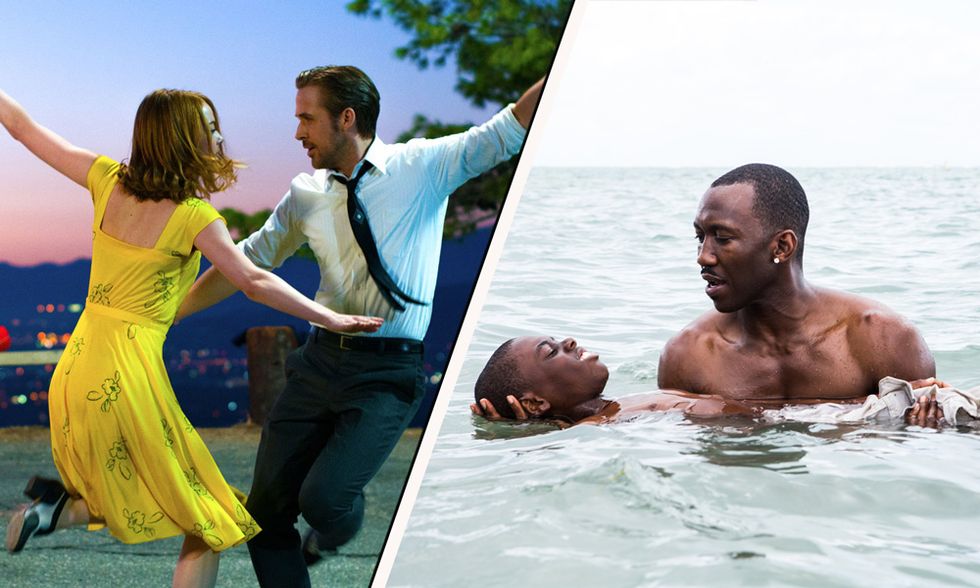There's an idea that many people subscribe to that beauty lies in the eye of the beholder. There is also a quote that reads: "The successfulness or unsuccessfulness of a piece of art has nothing to do with the quality, but the popularity among the paying class." This fact is sad but true. When we think of people who value art the most, we think of people who live life to the fullest, who go with the flow, people who are "type B", who maybe don't follow "social norms", and these people are often considered "working class." When we think of people who might value other things (family, tradition, routine, science) over the beauty of art, we often think of white males who wear suits to work every day, have a stay-at-home wife, have 2.5 kids, and who work in an office. They'd be considered "paying class". Because of the way society treats people like that, those people are often middle or upper-middle class.
Let me give an example of how this concept has recently invaded the film industry...two films did really well this year in the Oscars: Moonlight, and La La Land. I saw both these films in theaters before the Oscars, and here's what I experienced. La La Land, a film about two white attractive people trying to "make it" in L.A. and save the jazz scene (a relatively overused and generic plot) did really REALLY well in theaters. At the Bowtie Cinemas in Richmond, VA, La La Land was shown in the bigger of the two theater buildings and when I saw it, the theater I was in was packed with people. (The Bowtie theater in Richmond has two theater buildings, one to screen documentaries and indie films, and one to screen larger, more popular, or Blockbuster films.)
La La Land was shown in the bigger theater building, and Moonlight (as an indie film) was shown in the smaller theater building. Now, when an indie movie gets a lot of attention, Bowtie does move it to the bigger theater building if they need more theater space, but I saw Moonlight before it won the Oscar for Best Picture, so at this point, it was still in the smaller theater building. The theater I viewed it in had about six rows of seats and there were only three other people in the theater with me. Moonlight is an indie film about the life experiences of a gay black man growing up in a rough neighborhood with a drug addict mother and a pseudo/adoptee couple who act as his role models and parents. This film won the Oscar for Best Picture, but if you ask a middle class, middle aged white person which film they liked the most, you'll probably hear something like, "Well, I loved La La Land, but I haven't had a chance to see Moonlight yet...though I've heard it's good. Very culturally important, you know."
I heard almost this exact sentiment from several people when I asked what movies they enjoyed this year. It's more difficult for a white, middle class, middle aged person to connect with a film like Moonlight than it is for them to superficially enjoy a film like La La Land. La La Land doesn't make you think or self-reflect, and it doesn't have the capacity to take you out of your comfort zone (unless you really really really hate jazz music.) Even though Moonlight won the Oscar for Best Picture, and film critics across the country agreed that Moonlight is a much better film than La La Land, andMoonlight got a 97% on Rotten Tomatoes while La La Land got a 93%, La La Land was STILL wildly more popular, and way more people went to see La La Land instead of Moonlight. La La Land made a lot more money because middle class white people who can afford to see more movies in theaters wanted to see La La Land the most. According to IMDb, La La Land made approximately $118,600,000 while Moonlight made only $23,600,000 (this is taking each film's budget into account as well).
These numbers prove that the above quote rings true: the paying class decided which film they liked better and wanted to spend their money on, and that film turned out to be more popular in the end, even though film professionals say that Moonlight is objectively the better film. The success of La La Land had nothing to do with the quality; it was popular with middle class people, and so it made vastly more money, and will be remembered for longer. It is argued by many that Moonlight is of better quality; the film was adapted from real world experiences had by both the director of the film and by the writer who wrote the stage play "In Moonlight Black Boys Look Blue" that the film Moonlight was based off of.
So which film is better, La La Land or Moonlight? Which one was of better quality? How can we measure this? We know which film was more popular, but do we know which film was more successful? Is success based solely on how much money the film made and how many people liked it? If so, than La La Land was clearly more successful. Or is success based on how many awards and honors the film received? Moonlight did win Best Picture at the Oscars, but La La Land also won many awards at the Oscars and other award shows. Would La La Land still be considered more successful in that regard? Because the criteria for what makes a movie "good" is different for everyone, and because film quality isn't measurable by an equation or an algorithm, the answer is that we'll never be able to all agree on what film was actually better. In the end, it's all based on opinion, but historically, the opinion of the paying class will be seen as what makes a film successful or not.









































